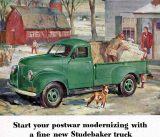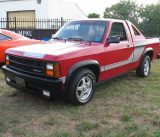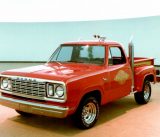
Source: Wikimedia Commons
The first-ever Scout was International’s answer to the Jeep. Designed and produced in under two years flat—a hell of an achievement at the time—the first Scout hit the market on January 18, 1961. The Scout 80, as it was called, was available in both two- and four-wheel drive options. The 93-horsepower engine had four cylinders and a three-speed, floor-mounted manual transmission.
As one of the first-ever sport-utility vehicles, the Scout proved popular, and by late 1965, it saw another incarnation in the Scout 800, which featured more creature comforts—the bucket seats were fancier, the windshield wipers were fixed to the bottom, the windshield was fixed, etc. Engine options included a 196-cubic inch four-cylinder, a 232-cubic inch inline six-cylinder, a 266-cubic inch V8, and in later years, even a 304-cubic inch V8. The International nameplate on the grille—the company has seen a number of name changes over the years, and goes by Navistar International Corporation today—was a big hit.
The first Scouts were beloved for their rugged versatility, and the automotive industry definitely took notice. Though the Scout’s sales exceeded those of Universal Jeeps throughout the 1960s, new competition was poised to threaten its success in the following decade. The Scout’s bare-bones construction, minimalistic styling, and elemental driving experience were getting old, and the manufacturer was poised to make a move to usher this truck into the 1970s.

Source: Wikimedia Commons
Enter: the Scout II. Though rumor has it that the design of this beauty was set as early as 1967, it made its market debut in spring of 1971. The truck featured the same 100-inch wheelbase as both the Scout 80 and 800 models, but on the whole it was about 10 inches longer and 1.5 inches wider—enough to give it a roomier feel without compromising its abilities on rugged terrain. And inside, amenities like comfortable seats, a conventional instrument panel, and
Previous Scout models featured short front and rear overhangs, and this trait was carried over to the Scout II. Though its longer length meant the rear approach and departure angles weren’t quite as impressive as the 80 or the 800, it still offered a lot of ground clearance and tough-as-nails Dana axles, which gave it plenty of status on the trails.
Where styling was concerned, one of the most noticeable differences was the front grille, which featured three horizontal bars between the headlights, encased with chrome rings. (The grille design was changed again in 1973.) The basic body design had been updated—it was more modern, sexier, and in retrospect its smooth lines are emblematic of the 1970s. For the entirety of its ten-year run, the body design remained unchanged.

Source: Wikimedia Commons
All Scout II models featured four-wheel drive, and under the hood, the Scout II model was available with the same four-, six-, and eight-cylinder engines as the first-generation models. But as early as 1973, the 196 four-cylinder engine was dropped from the line. (Fun fact: It was later re-introduced during the energy crisis.)
Aside from the convertible model, the open-vehicle design featured a removable roof, similar to the original Scouts. Made of steel, it was notoriously leaky, heavy, and inconvenient to store. The fact that the roofless drive option was there was almost more appealing than the actual drive itself.
Sadly, after ten years on the market and no redesign, the Scout II started to languish. International Harvester suffered with the erosion of the agriculture industry, and in 1980 found there was no budget for an update. The company decided to walk away from the light utility vehicle market, a case of bad timing—within a few years, the SUV market took off at an unprecedented rate.
But for some of us, the fact that this vehicle never made it into the future gives it a certain romance, and in our eyes, the Scout remains a symbol of 1970s style, charm, and swagger.





